For years, the village of Thai My in Cu Chi District, Ho Chi Minh City has specialised in making plenty of products from bamboo and rattan which are favourites in the domestic market and exported to some foreign countries.
According to artisan Cao Thi Cu, 86 years old in Binh Thuong 2 hamlet, the craft of making bamboo and rattan products has existed in the village for over 100 years and has been handed down from generation to generation. For years, each hamlet in the village has specialized in making only one type of product and all the villagers, from the old to the young, are quite good at the craft.
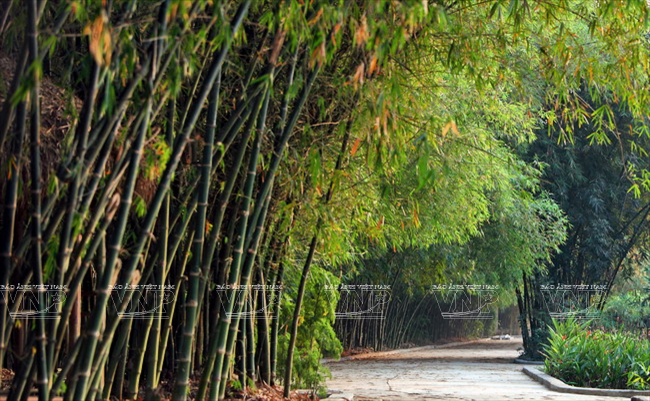
To have material for production, the locals plant bamboo around their houses,
in their gardens and on the roadsides. Photo: Nguyen Luan/VNP
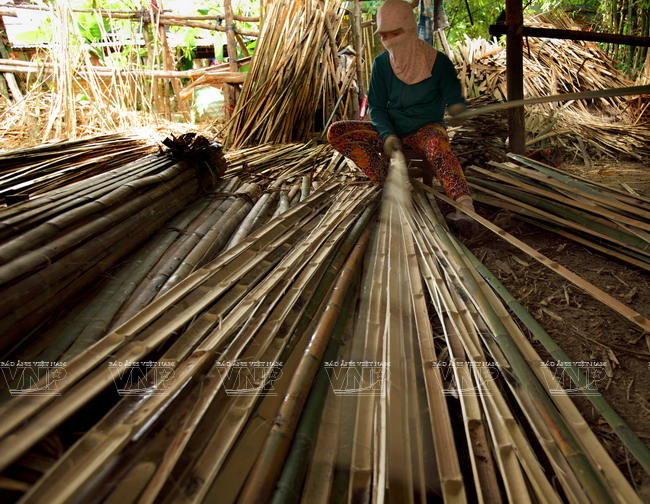
Classifying bamboo laths. Photo: Nguyen Luan/VNP

Thai My villagers use machines in some production stages that help increase productivity. Photo: Nguyen Luan/VNP
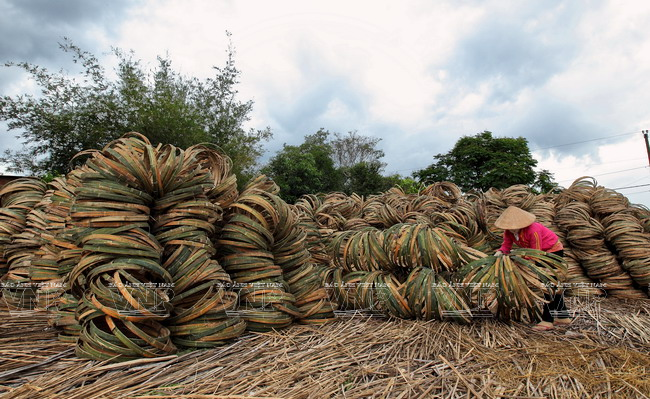
Drying rims of bamboo baskets. Photo: Nguyen Luan/VNP
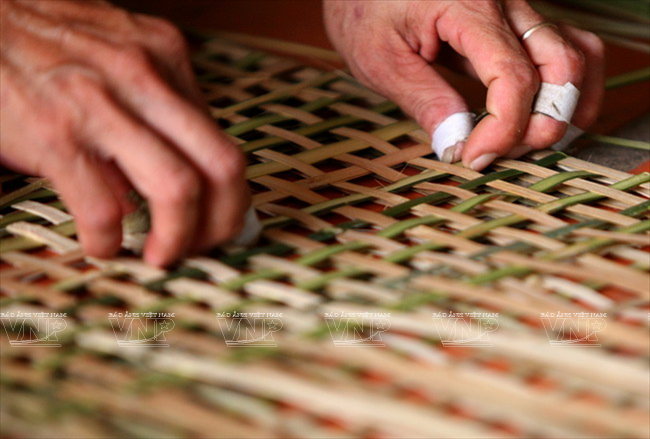
Đan giỏ nắp đựng cua, ghẹ.
Weaving bamboo baskets.Photo: Nguyen Luan/VNP

All the villagers, from the old to the young, are quite good at the craft. Photo: Nguyen Luan/VNP
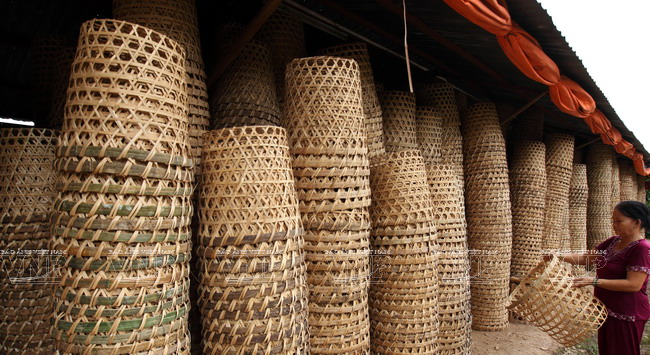
Bamboo baskets are favourites in Taiwan, China. Photo: Nguyen Luan/VNP |
«
The bamboo weaving craft in Thai My is now being restored and developed with the participation of about 250 households. The village has two large workshops with over 1,000 local labourers which produce different types of products to export to Taiwan and Japan.
(Ms. Pham Thi Hieu, People’s Committee’s Vice President of Thai My Commune, Cu Chi District, Hochiminh City)
» |
There were times the village’s craft flourished and their products were much sought after in the market. During peak seasons, products were heaped up in every house and were sold in only one day. Even, the villagers could not meet the demand of customers. However, in recent years due to available plastic and aluminum products, the bamboo and rattan products have become less popular. Thanks to the authority’s support and the locals’ effort, the craft has been preserved. To have material for production, the villagers grow bamboo around their houses, in their gardens and fields. They invest more in production facilities and advanced technology to improve the quality of products which have gradually regained their position in the domestic market and are exported to some foreign countries.
The locals also created their own machines to whittle the bamboo barks off and make brims that help shorten the process of production and reduce expenditure. In 2007, Le Vinh Hanh in My Khanh A invented a machine with a capacity of whittling the bamboo’s bark that equaled the output of 15 people. To expand the production scale, he also imported 20 machines to split bamboo laths. At present, his workshop provides jobs for 25 people and supplies the material for all households in the village.
Visiting Thien Long Workshop owned by Le Thi Huych, we saw the strong revival of this craft. Her workshop, covering 3ha, was full of products for export. With 50 workers, her workshop can produce about 1,200-1,500 bamboo baskets/day and exports about 30-40 containers of products each year to Taiwan, China. Huych said that some years ago, her workshop could not provide enough bamboo baskets for Taiwan customers because of the considerably increasing demand during the peak season of harvesting cabbages. Therefore, to meet the timely demand of customers, she has plans to both produce and store products.
Thanks to Ho Chi Minh City’s financial support policy and the assistance of the authority in Thai My Commune and the women’s association, the locals in Thai My drastically invest in technology and make diverse product to meet all tastes of customers./.
Story: Do Van - Photos: Nguyen Luan
danghuyen